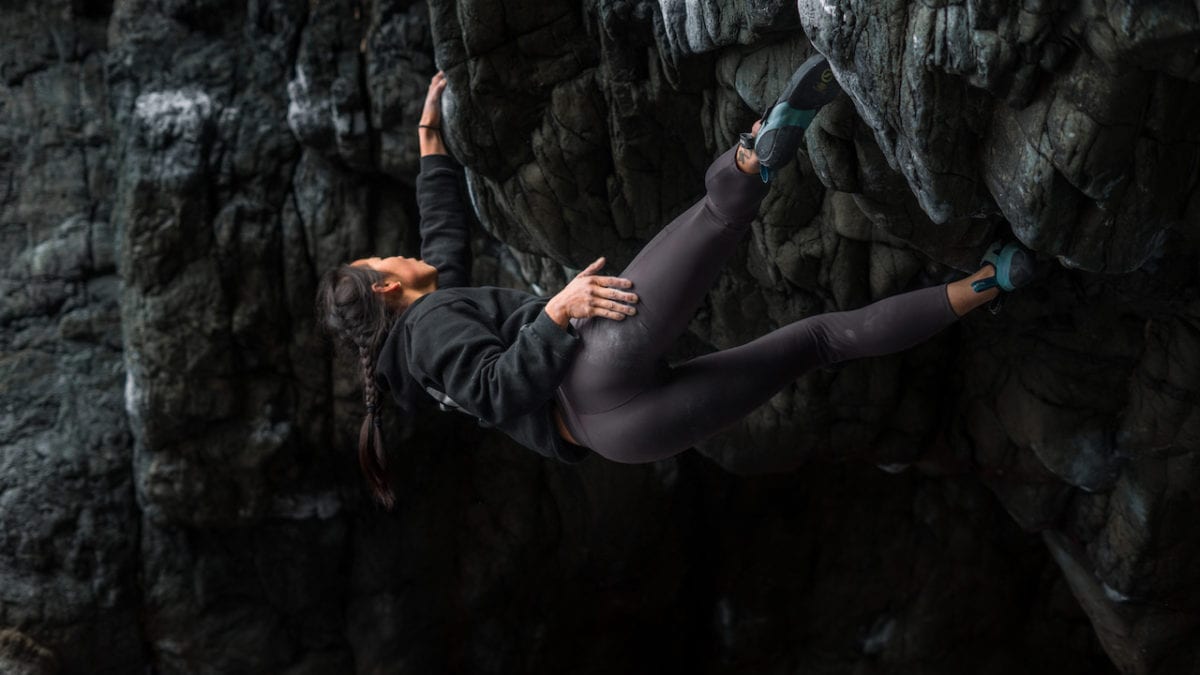A Beginner’s Guide to Flashing Climbs
A beginner's guide to flashing boulder problems and routes outdoors.

Flashing is perhaps one of the most challenging skills to learn. To “flash” a boulder or route is to complete the entire sequence on your first try. It effectively requires the climber to both read the route correctly, ensure that they have warmed up to a point where they will not become tired on route, and then, most challenge, execute their proposed sequence successfully.
Competition climbers become necessarily proficient at flashing due to the fact that an attempt is frequently what separates competitors between rounds. Outdoor climbers frequently struggle to flash outside as they presume the sequence to be difficult. Flashing is useful, though. Being able to do something quickly saves skin, energy, and gives you the time to try other routes. Here is how the competition approach to flashing can be transferred to outdoor rock climbing.
Forget about the grade
The first, and perhaps most important, aspect of flashing hard outside is to forget about the route’s proposed difficulty. Though V-grades and the Yosemite Decimal system generally reflect the level of the climb rather well, every individual has different strengths and weaknesses. For all you know, the easiest beta up the climb has not yet been discovered. This is perhaps less true in more frequented areas, but at the same time, building your own adventure is an essential aspect of climbing outside. Grades are subjective, looking at the difficulty is only going to be distracting.
Look at the holds
If you are coming into a new area, you are probably watching beta videos. You may even have a b ta-bearing local right by your side. Take in what the videos have to show you and what the locals have to say, but also recognize that there may be another way to the top. What looks good to you might look like trash to the local climbing scene. Maybe that means it is bad beta, but sometimes it is just indicative of differing strengths. This becomes especially true if you are a particularly small, tall, powerful, flexible or light climber. Sometimes you need to embrace your style, even if the crew thinks your beta is heinous.
Believe in yourself
This is perhaps one of the more challenging aspects of rock climbing. Embrace that challenge. Belief in yourself beats out negative self-talk every time. Though negative self-talk can take the pressure off and give you one of those goes where you just find yourself at the top, it is discouraging and not useful for flashing. The first rule of flashing anything is to know that the boulder goes. The second is to believe that you can do it.
Full-body Sequencing
You may feel self-conscious getting into the full beta dance at the crag, but practicing the moves, even just in your imagination, before getting on the climbing can shake out some of the bad beta and make it easier to find your line. Set the heel, feel the pocket, find the crux and prepare for it. Sometimes just knowing how the line ends, post-crux, can be the difference between success and failure.
Feel the Holds
Competition rules state that you can only touch the starting holds when you are sequencing for it to truly count as a flash. Outdoor rules differ. If you can touch it from the ground, give it a feel. Sometimes ethics differ on this, so if you want a true flash, find out the ethics of your area. For our purposes, however, we’re just trying to do lines quickly. At the end of the day, a flash is best defined by doing it on your first try.
Finally, practice
Flashing is a mindset that is unique to every climber. Know that and practice on the things below your limit in the gym. When you go outside, simply strive to sequence and flash every line you come across. Your first go might even be your best for the day.
Featured photo of Zoe Beauchemin by Jonah Shantz.


